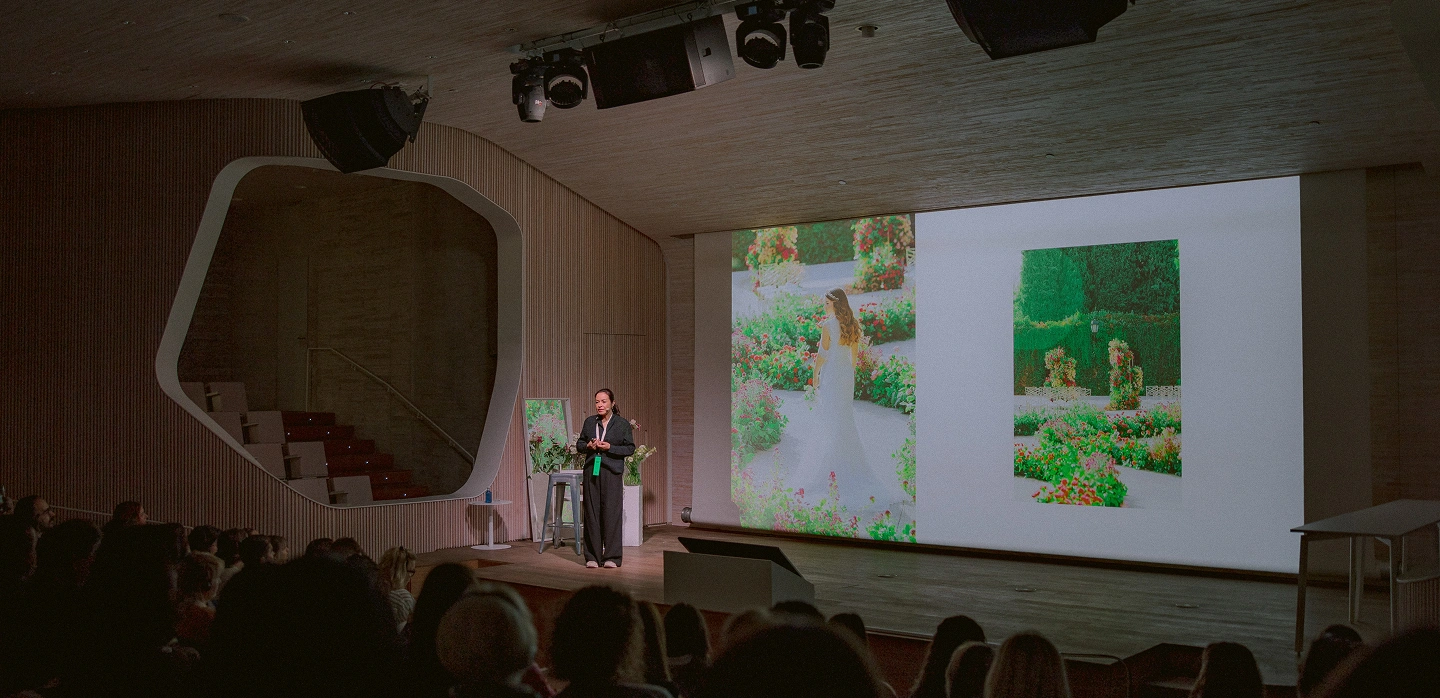How did you get started in the world of floral design?
The flowers came into my life in a turn of events I didn’t even expect. I came to Spain for a short time to study for a PhD in Peace, Conflict, and Democracy, but life had other plans for me. I found love and suffered a series of family losses that led me to the decision to stay, and with that, I embarked on a radical change in my life.
I’ve always had artistic and creative interests, so exploring new possibilities led me to floral art. I discovered an absolutely fascinating world, and flowers were a tool for expressing myself and creating with one of nature’s most beautiful elements. I realized the privilege this represented. I didn’t think twice and began my basic technical training. After a short stint as a freelancer in the wedding industry, I began my own projects.
My first wedding was in 2017, and coincidentally, it was a destination wedding. Through Instagram, I was contacted by a Venezuelan couple who were coming to Granada to celebrate their wedding with their immediate family. The flowers were meant to be a discreet yet meaningful detail; I remember using different types of orchids as a nod to the tropics. This first experience filled me with optimism and enthusiasm and opened the door to a path I still continue to follow.
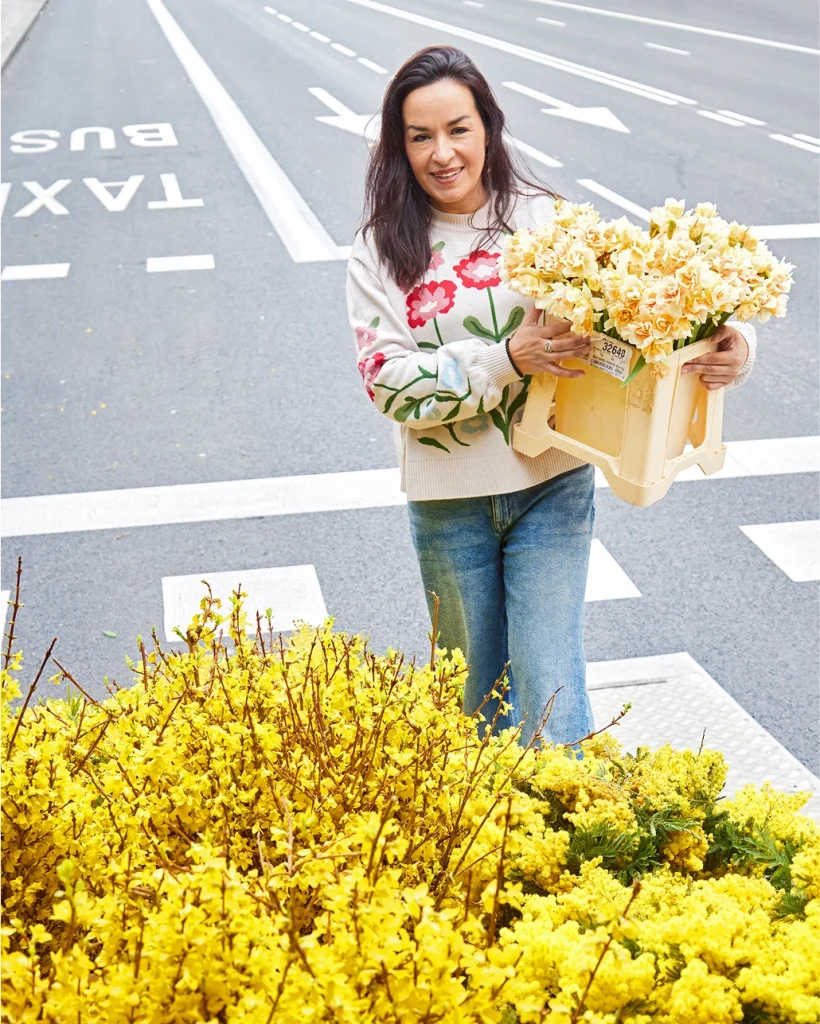
Are there specific themes, colors, or elements that you find yourself repeatedly drawn to in your work?
As time goes by, I realize that the common thread that runs through my work is the concept of delicacy. It’s how I approach my designs, regardless of the style, colors, or types of flowers. I tend to create from what I understand as natural, organic, fluid, balanced, and ultimately delicate.
“I’ve always had artistic and creative interests, so while exploring new possibilities, I came across floral art.”
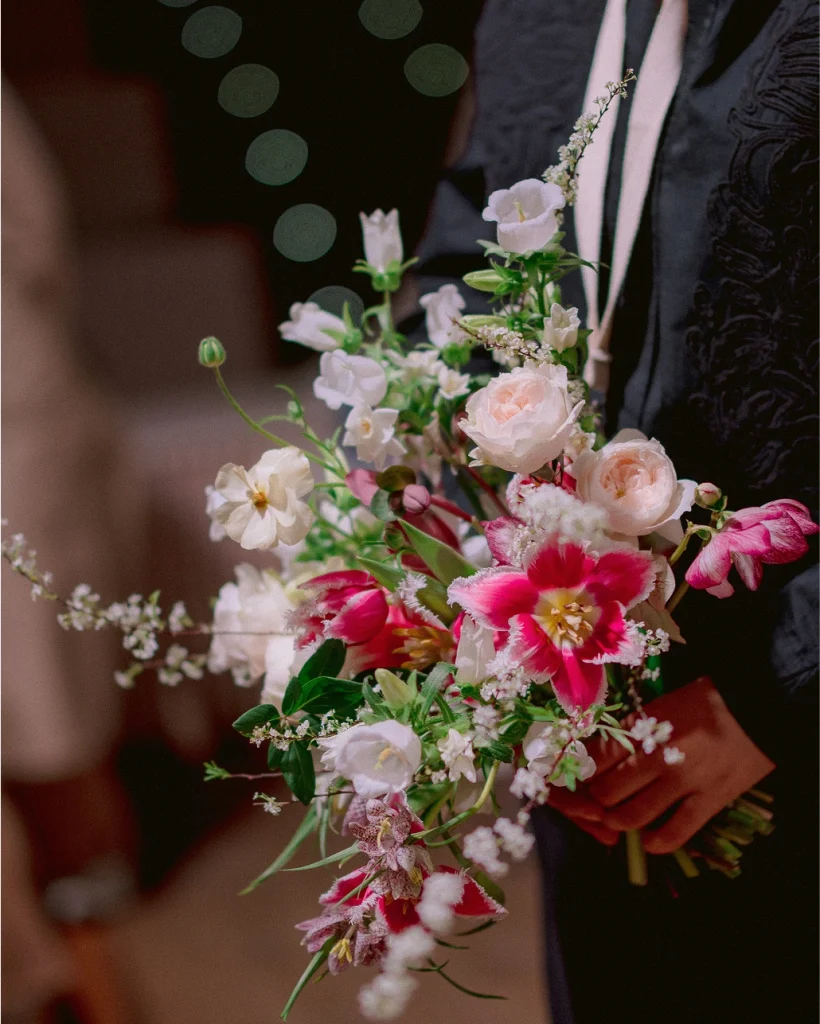
Who or what are your main sources of inspiration in the world of floral design?
Although I’m naturally drawn to garden style and admire artists like Liz of Siloh Floral or Madison of Hart Floral, I also closely follow profiles of different styles, such as the collective This Humid House, Art Petrov, and Lisa of DoctorCooper. I’m also lucky to surround myself with florist friends from whom I learn, admire, and who inspire me greatly!
Are there other artists or designers, not necessarily in the floral industry, who inspire your work?
Inspiration comes from everything that moves me, from the things that inspire my curiosity, which then translates into designs or guiding threads for my projects. This is ever-changing; it depends on each stage I’m experiencing personally, my interests, or my mood. I don’t always draw from the same sources.
From nature, dance, art, and photography to fashion and pastry, for example. Right now, I’m deeply drawn to the work of Jessica Sale, an exquisite English pastry chef who inspires me with her shapes, processes, technique, and aesthetics. On the other hand, I’m deeply inspired by the work of Ruven Afanador, a Colombian photographer whose sensitive portraits open doors to other worlds.
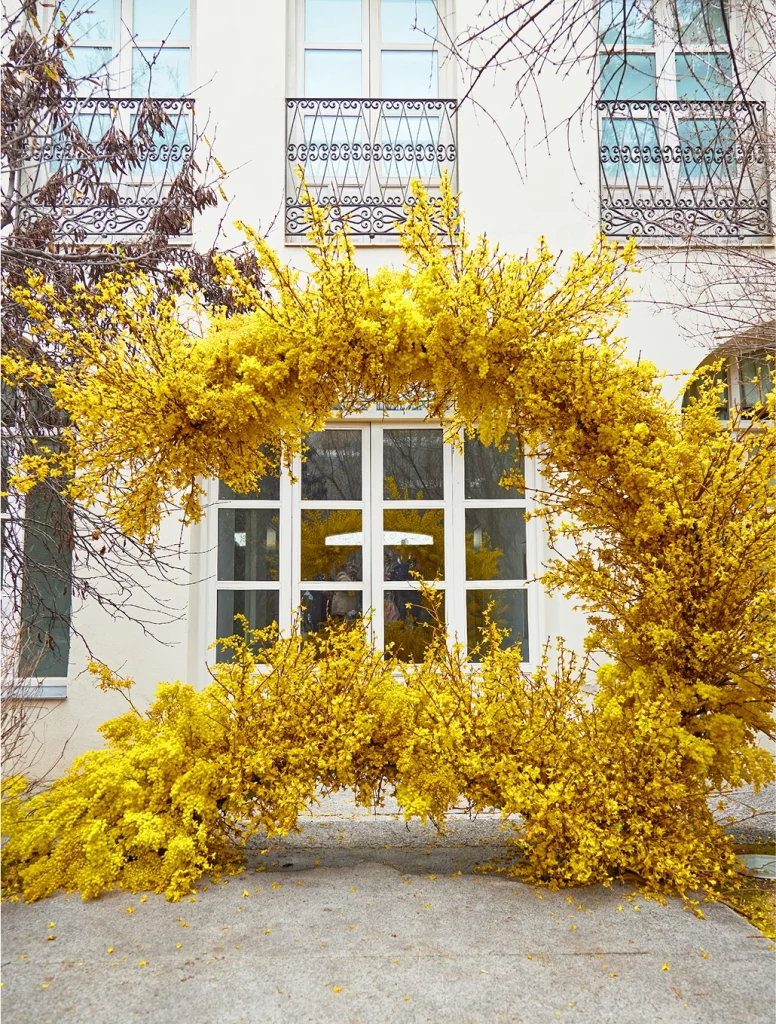
What has been the most significant learning experience in your career as a floral designer?
Floral design has broken many molds in my life. I never would have imagined starting my own business venture, simply because the business world wasn’t my thing (and honestly, it still isn’t). But I’ve learned that everything is a process with a learning curve, where persistence is key. Both in business and in floral design itself, I’ve learned to accept that mistakes and the ability to self-criticize to identify what can be done better are fundamental parts of growth. At first, these ideas caused me a lot of frustration; now I accept that it’s an inevitable part of the journey and I’m constantly developing tools to help me deal with it.
For example, the logistics and production of each event is a challenge I couldn’t face without a very clear organization and close communication with my team. Or at the business level, defining my strategy, my short- and medium-term goals, and making a huge effort to stay away from anything that doesn’t contribute to this has been key.
Could you highlight one of your favorite floral design projects and what made it special for you? What was your most recent project?
One of my first projects was the installation of an aerial installation with hundreds of flowers and vegetables suspended from the ceiling of a stand at the Fruit Attraction Fair for a horticulture company on the coast of Granada. It was very meaningful to me because it was the initial stage of my project and certainly a huge challenge. The result was spectacular; the client highly appreciated it, and I am very proud of it.
My last project of 2023 was perhaps one of my most special to date. An English couple decided to get married at the Palacio de los Córdova in Granada and wanted to transform the ceremony space into a flower-filled garden, with a curved aisle over 50 meters long. Together with a group of excellent professionals from all areas, we created a fairy tale for an intimate wedding of just 20 guests, where flowers played a prominent role in the experience of both the bride and groom and their guests.
Is there any event or client that stands out in your memory as particularly rewarding?
My experience at the 2017 Flora Festival was eye-opening as a florist, and I remember it as especially rewarding. I worked as an assistant on Isabel Marías’s project, undergoing an intense learning process that encompassed floral design, learning from her sensitivity, vision, and technique. It also taught me about the commitment, teamwork, support, and collaborative effort required for such massive installations. It was a thrill to be a part of it.
I also have to highlight another key aspect: I met many of my florist friends, with whom I maintain close contact today. They have undoubtedly been and continue to be part of my professional support network. It’s so important to create spaces like these, where we can grow together in so many ways. Madrid Blossom will undoubtedly be another memorable moment in this regard.
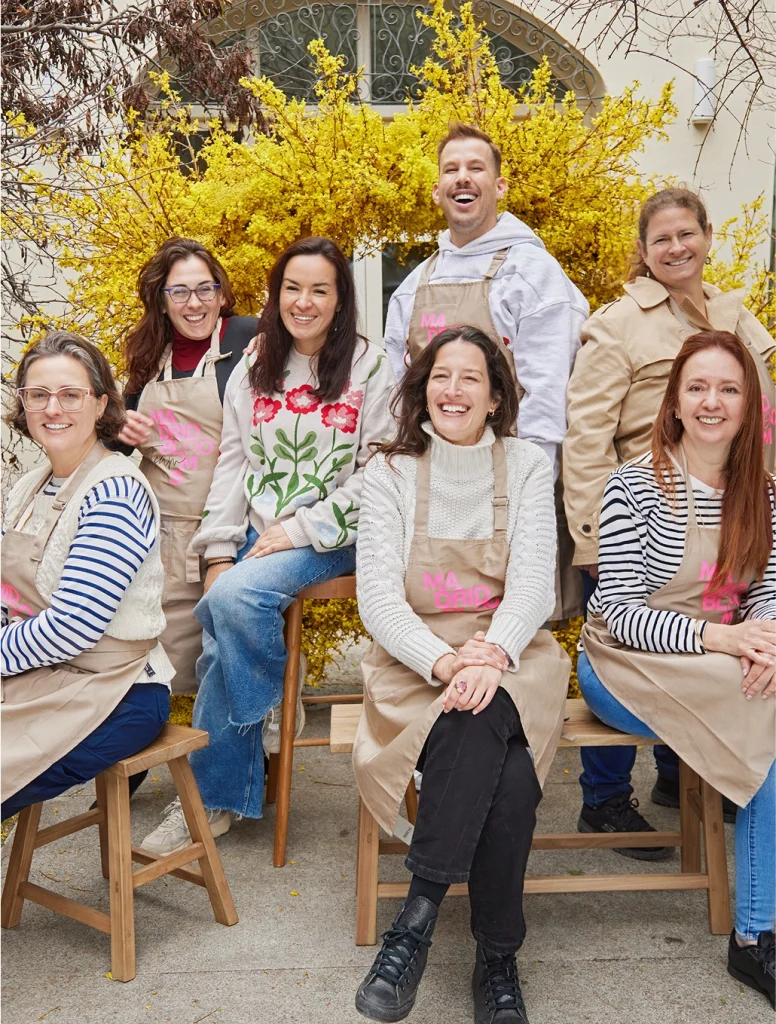
Are there any emerging trends or innovative techniques that you find particularly exciting?
I think the use of textiles integrated with flowers or plant sculptures in event decorations is a strong trend for the coming years. I really enjoy bringing trends to my own territory, to my own interpretation. I find it challenging and exciting.
What specific sustainable practices do you incorporate into your daily work as a floral designer?
I’m very aware of the debt we as florists owe to the environment due to the large amounts of waste we generate, much of it non-biodegradable. I have a long way to go in this regard. Today, I incorporate the use of Kenzan or chicken wire for every project where possible, and I favor the use of seasonal, locally grown flowers in my designs.
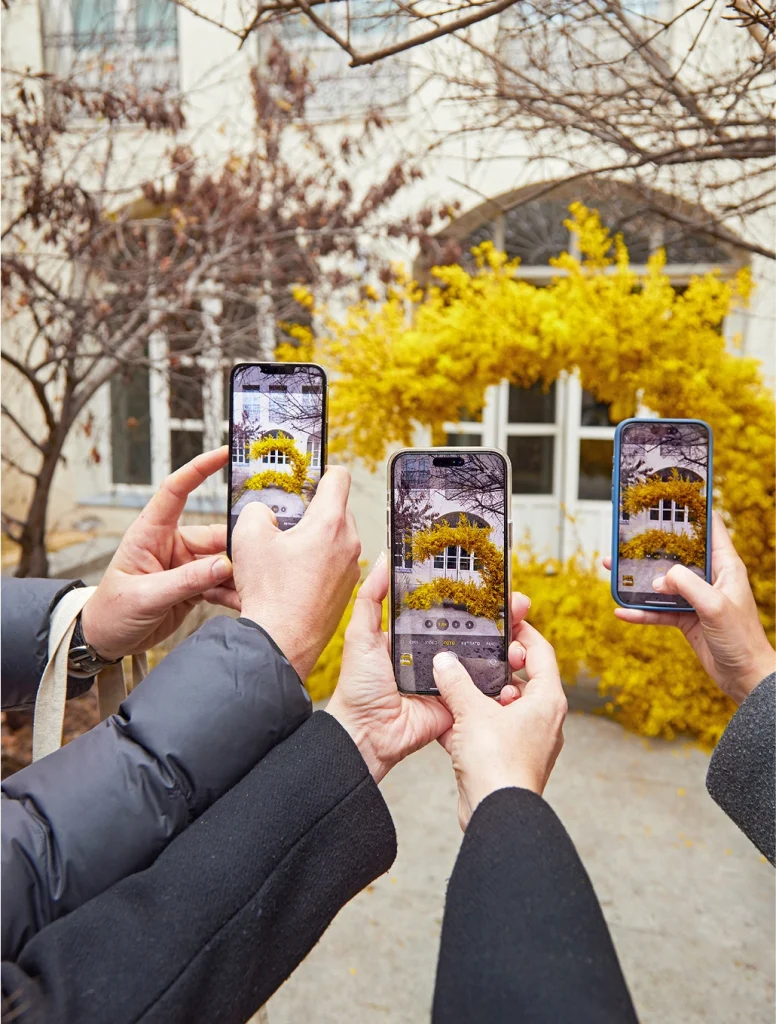
When people enjoy your floral designs, what message or emotion do you hope they take away?
The world of events, but particularly weddings, is a world steeped in sensitivity. My work is part of a carefully crafted, thoughtful, and eagerly awaited staging for a couple. Everything must be as close to perfection as possible. I always want my work to speak of delicacy, beauty, and above all, to convey everything we have matured with the couple over time. I want it to convey authenticity.
PHOTOGRAPHY BY FACIBENI PHOTOGRAPHY
